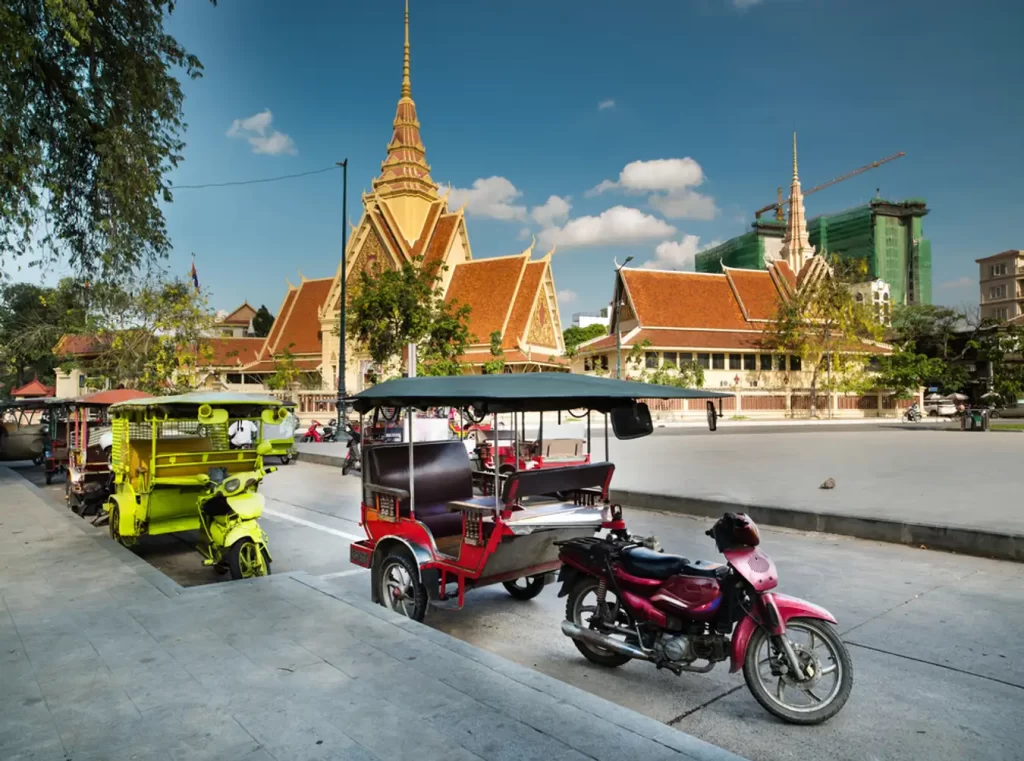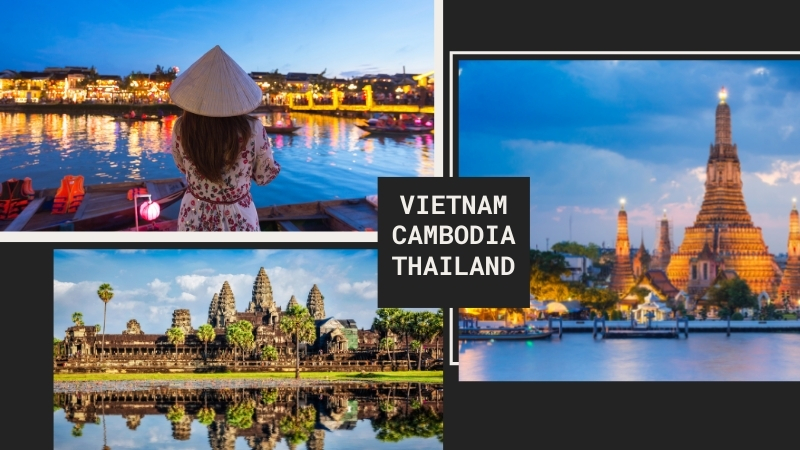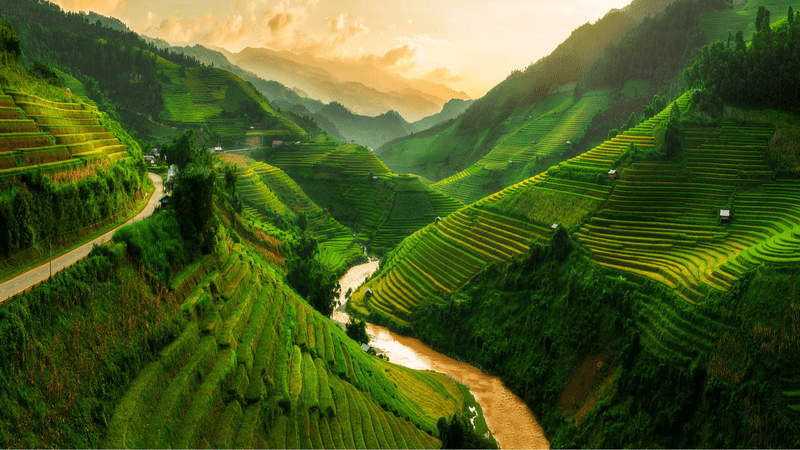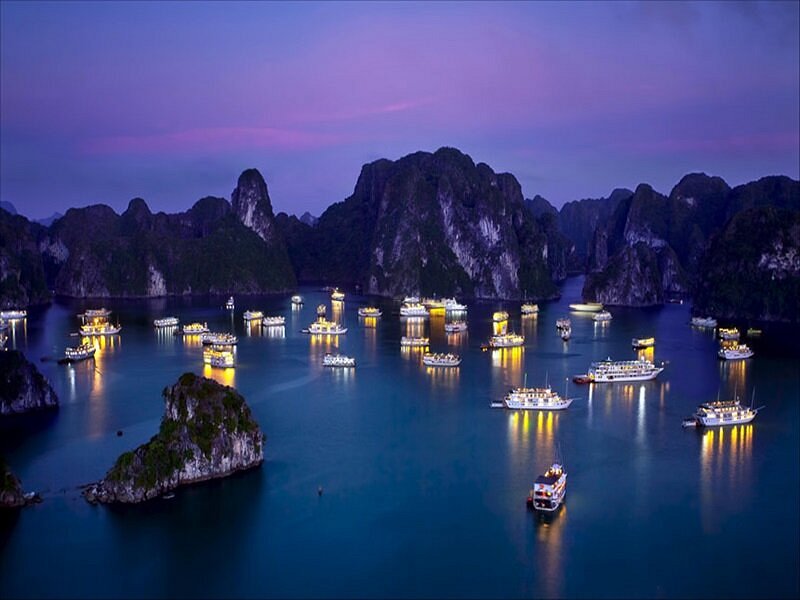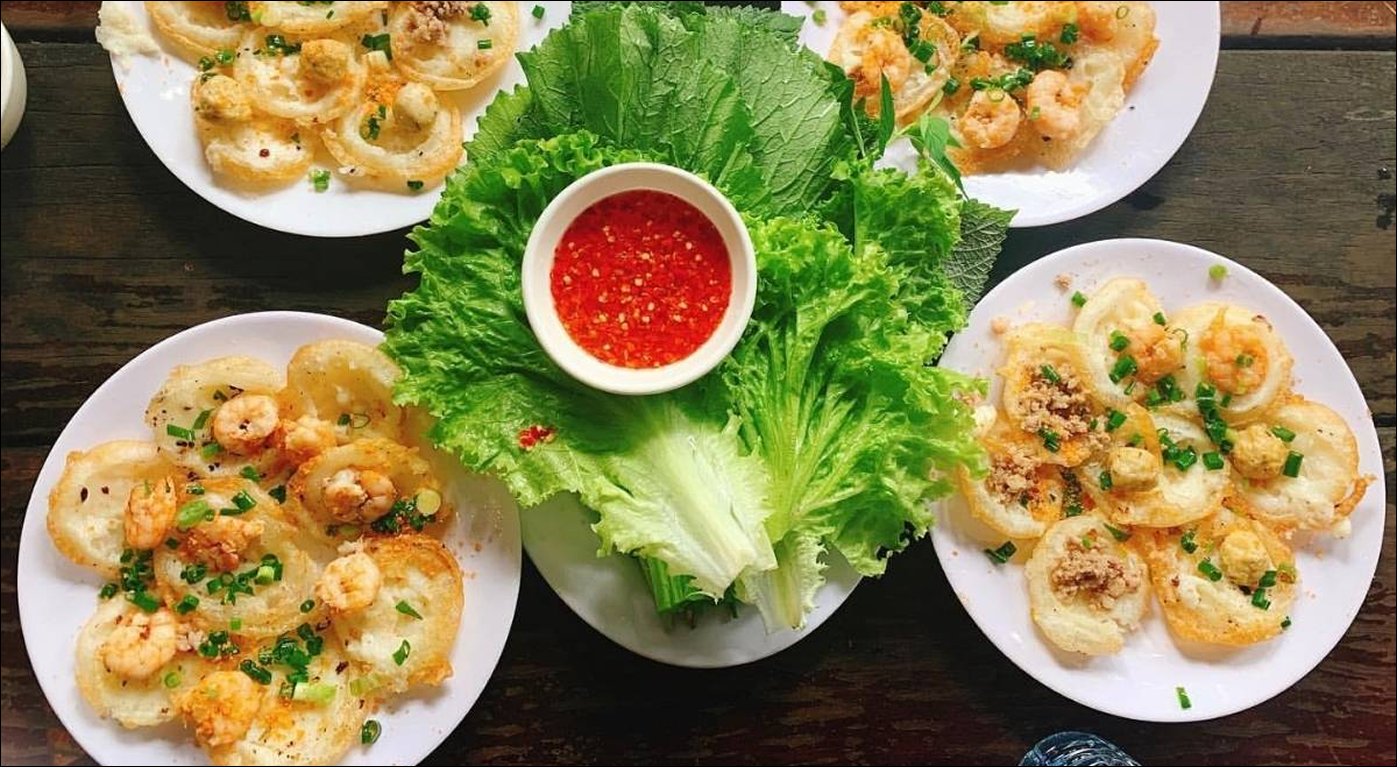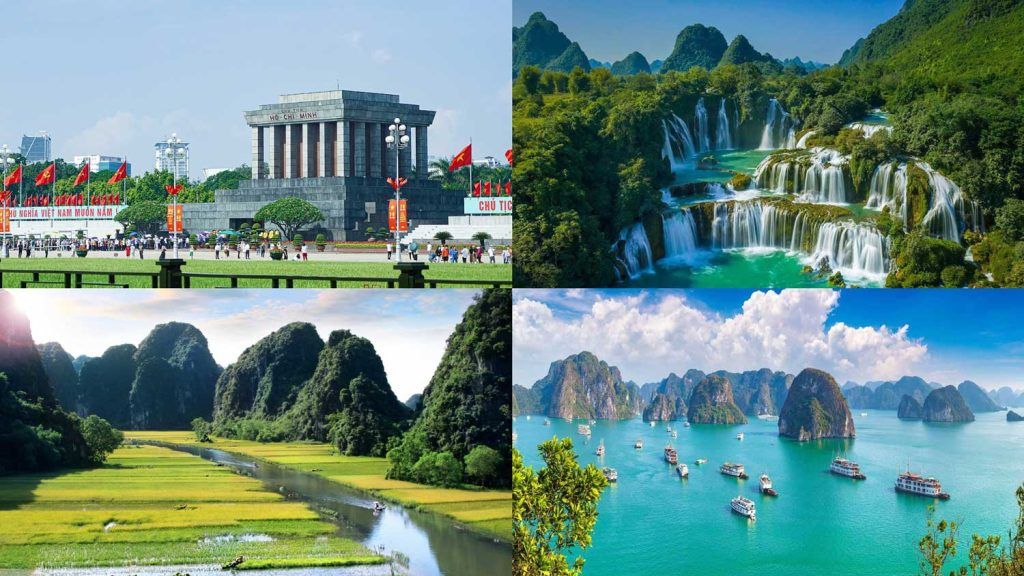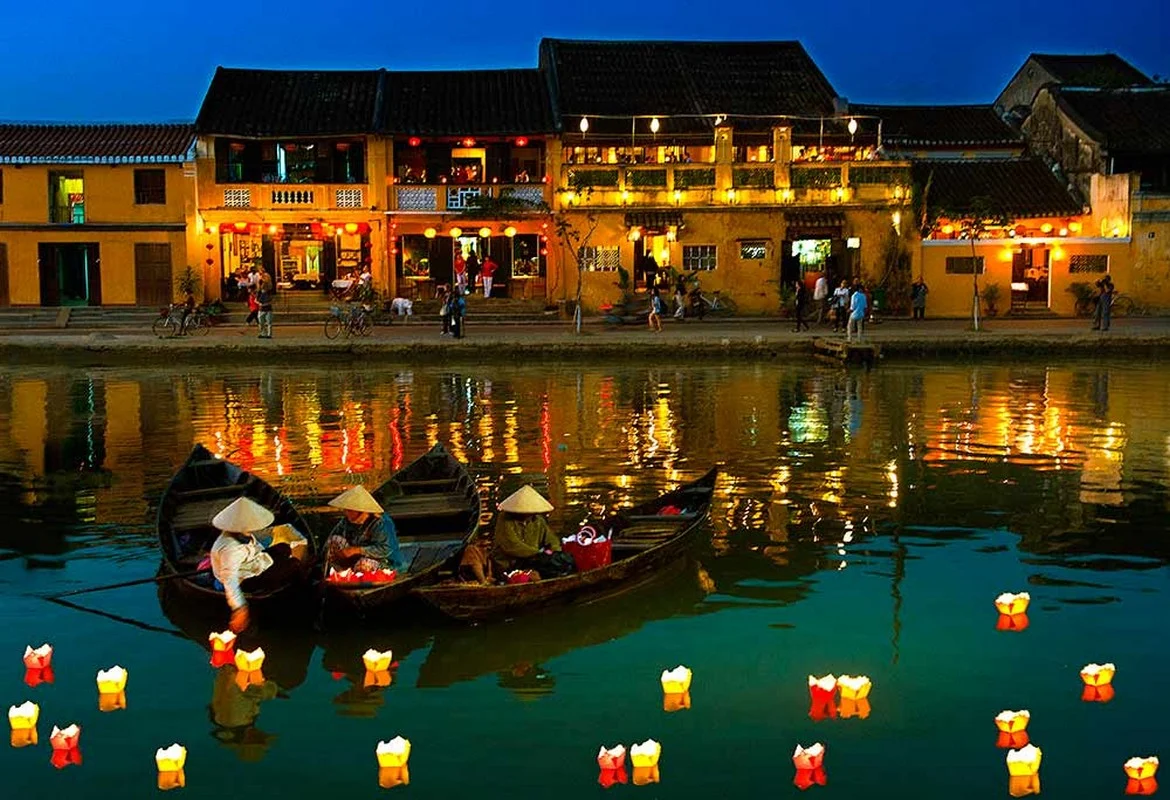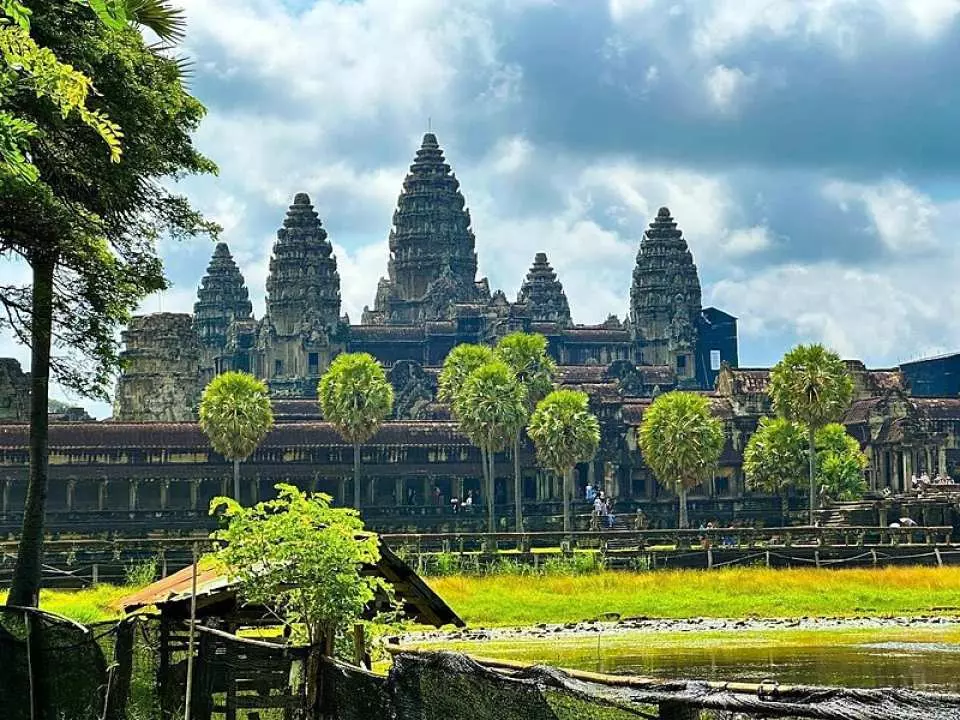
Traveling to Cambodia offers an adventure filled with ancient temples, vibrant culture, and beautiful landscapes. Knowing how to travel to Cambodia is important for a smooth and enjoyable trip. This guide will cover everything you need to know, from obtaining the necessary visas and understanding travel requirements to exploring the best ways to navigate the country’s diverse regions. Whether you’re planning to marvel at the iconic Angkor Wat, immerse yourself in the bustling streets of Phnom Penh, or relax on the serene beaches of Sihanoukville, being well-prepared will help you make the most of your Cambodian journey.
How to Travel to Cambodia
Traveling to Cambodia promises a captivating journey filled with rich history, stunning temples, and vibrant culture. To ensure a smooth and enjoyable trip, it’s essential to understand the key aspects of traveling to this Southeast Asian gem. Here’s a comprehensive guide on how to travel to Cambodia:
Travel Requirements and Documentation
To travel to Cambodia, you must have the required documentation and meet the entry requirements. Here’s what you’ll typically need:
Passport
Ensure your passport is valid for at least six months beyond your planned departure date from Cambodia and has at least one or two blank pages for entry and exit stamps.
Visa
- Tourist Visa: Most travelers need a tourist visa to enter Cambodia. Upon arrival at major airports and land border crossings, you can obtain a visa or apply for an e-visa online before your trip.
- Visa on Arrival: This option is available at Phnom Penh, Siem Reap, and Sihanoukville airports. You’ll need to fill out a form, provide a passport-sized photo, and pay a fee (typically around $30).
- E-Visa: Apply online through the official Cambodian government website. The e-visa is valid for 30 days and is usually processed within three business days.
- Other Visas: For longer stays or other purposes (such as business or study), apply for the appropriate visa type at a Cambodian embassy or consulate before your trip.
Additional Documentation
- Travel Insurance: Highly recommended to cover health, travel disruptions, and theft. Ensure your insurance includes coverage for medical evacuation.
- Return or Onward Ticket: Proof of return or onward travel may be required upon entry to show that you do not intend to overstay your visa.
- Proof of Accommodation: Some travelers may need to show proof of accommodation bookings for their stay in Cambodia.
Transportation Options
Getting around Cambodia’s cities, countryside, and attractions is easy with various transportation options. Here’s a comprehensive guide to the transportation options available in Cambodia:
1. Air Travel
Domestic flights are the quickest option for long-distance travel within Cambodia. Major airports include Phnom Penh International Airport (PNH), Siem Reap International Airport (REP), and Sihanoukville International Airport (KOS). Airlines like Cambodia Angkor Air and Lanmei Airlines operate regular flights between these cities.
2. Buses
- Intercity Buses: Buses are a popular and economical way to travel between cities. Companies like Giant Ibis, Mekong Express, and Virak Buntham offer reliable and comfortable services. These buses often provide air-conditioning, Wi-Fi, and sometimes even snacks.
- Minibuses: Minibuses are a faster alternative for shorter trips or routes not served by larger buses. They cover routes between smaller towns and cities but may be less comfortable due to limited space.
3. Taxis and Ride-Hailing Services
- Taxis: Taxis are available in major cities and can be hired for short trips or longer journeys. It is advisable to negotiate the fare before starting the trip or ensure the meter is used.
- Ride-Hailing Services: Mobile app-based services like Grab are widely used in cities like Phnom Penh and Siem Reap. These services offer convenience, transparent pricing, and a range of vehicle options.
4. Tuk-Tuks and Motorbike Taxis
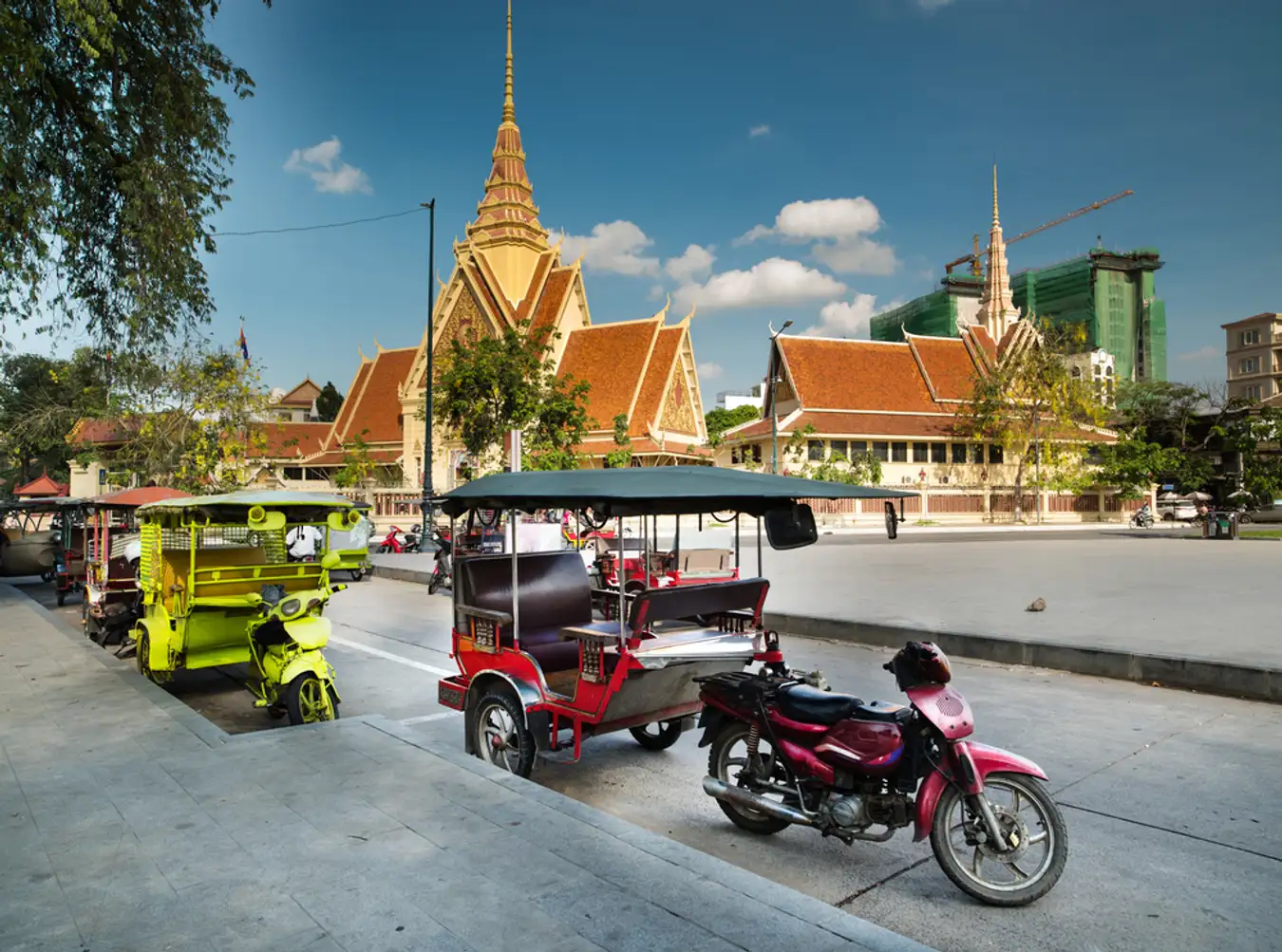
- Tuk-Tuks: A common and affordable mode of transport in Cambodia, tuk-tuks are three-wheeled vehicles ideal for short trips within cities. They are widely available, and fares should be negotiated before the ride.
- Motorbike Taxis: Known locally as “moto-dops,” motorbike taxis are a quick way to navigate traffic. They are cheaper than tuk-tuks but require negotiating fares beforehand and can be less safe, especially in busy traffic.
5. Car Rentals
- Self-Drive Rentals: Car rental agencies are available in major cities and offer a range of vehicles. However, driving in Cambodia can be challenging due to traffic conditions and road quality. An international driving permit is required.
- With Driver: Renting a car with a driver is a more convenient and safer option, especially for exploring rural areas or for long-distance travel. This service is available through travel agencies and hotels.
6. Bicycles and Motorbike Rentals
- Bicycles: Bicycles can be rented in tourist areas, particularly in Siem Reap, where cycling to explore the Angkor temples is popular. It’s an eco-friendly and enjoyable way to see the sights.
- Motorbikes: Motorbike rentals are common in cities and tourist towns. They offer flexibility and independence but require caution due to traffic and road conditions. Always wear a helmet and have an international driving permit.
7. Boats and Ferries
- River Cruises: River cruises on the Mekong and Tonle Sap rivers offer scenic travel options between Phnom Penh and Siem Reap or to visit floating villages and other attractions.
- Ferries: Ferries operate between the mainland and islands such as Koh Rong and Koh Rong Samloem from Sihanoukville. They offer regular services and are the primary means of reaching these islands.
8. Trains
Royal Railway: Cambodia’s rail network, operated by Royal Railway, offers limited but scenic routes. The main lines connect Phnom Penh to Sihanoukville and Phnom Penh to Poipet (near the Thai border). Trains are slower but offer a unique travel experience.
By understanding these transportation options, you can choose the best mode of travel to suit your itinerary, budget, and preferences while exploring Cambodia. Whether you prefer the convenience of flights and taxis or the adventure of tuk-tuks and motorbikes, Cambodia offers a variety of ways to experience its rich culture and scenic landscapes.
Best Time to Visit Cambodia
The best time to visit Cambodia is during the dry season, from November to April. With pleasant weather and cooler temperatures, this period is ideal for exploring the country’s rich cultural heritage and scenic landscapes.
November to February: Cool and Comfortable
These months are characterized by cooler temperatures, typically ranging from 20°C to 30°C (68°F to 86°F). The pleasant climate is perfect for sightseeing, visiting temples such as Angkor Wat, exploring cities like Phnom Penh and Siem Reap, and enjoying outdoor activities. This period includes important festivals like the Water Festival (Bon Om Touk) in November, which features boat races and vibrant celebrations.
March to April: Hot and Dry
Temperatures rise, often reaching 35°C (95°F), especially in April. Early mornings and late afternoons are the best outdoor activities. Despite the heat, this is a good time to visit coastal areas and islands, such as Sihanoukville and Koh Rong. April hosts the Khmer New Year (Choul Chnam Thmey), a significant celebration of traditional games, dances, and water-splashing festivities.
May to October: Rainy Season
The rainy season brings high humidity and frequent showers, with temperatures ranging from 25°C to 35°C (77°F to 95°F). Rainfall is typically heaviest in September and October. While travel during this period can be less predictable, the countryside becomes lush and green, offering beautiful landscapes. It’s a quieter time with fewer tourists, and accommodations may be cheaper. Some remote areas may become difficult to access due to heavy rains, but major tourist sites remain open and accessible.
In summary, the ideal time to visit Cambodia is during the dry season from November to April, which offers the best weather conditions and vibrant cultural experiences. However, the rainy season from May to October offers its unique charm, with lush landscapes and fewer crowds.
How to visit Cambodia: What to Pack
When visiting Cambodia, pack light, breathable clothing suitable for the hot, humid climate and modest attire for temple visits. Bring essential documents like your passport, visa, travel insurance, and copies of important papers. Include a mix of US dollars and credit cards for transactions.
Health items are crucial, so pack personal medications, a first aid kit, sunscreen, insect repellent, and hand sanitizer. For comfort, carry sturdy walking shoes, a reusable water bottle, a lightweight rain jacket, and a travel towel.
Remember your smartphone, charger, universal power adapter, and daypack for excursions. Sunglasses, a hat, and snacks will enhance your travel experience.
The Top Tourist Attractions in Cambodia
Cambodia, home to ancient temples, lush landscapes, and rich cultural heritage, offers travelers many captivating experiences. Here are some of the top tourist attractions in Cambodia that should not be missed:
1. Angkor Wat: Iconic Temple Complex
Angkor Wat is a magnificent temple complex in Cambodia built by King Suryavarman II in the 12th century. It was originally dedicated to the Hindu god Vishnu but was later converted to Buddhism. Angkor Wat, featured in the Cambodian national flag, is renowned for its grandeur, elaborate carvings, and extensive bas-reliefs depicting Hindu epics and historical scenes. Surrounded by a vast moat and featuring five central towers symbolizing Mount Meru, it is best visited during the cooler months from November to February, with sunrise and sunset offering particularly stunning views. As a UNESCO World Heritage site, Angkor Wat is the focus of ongoing conservation efforts to preserve its historical and cultural significance for future generations.
2. Phnom Penh: Capital City Attractions
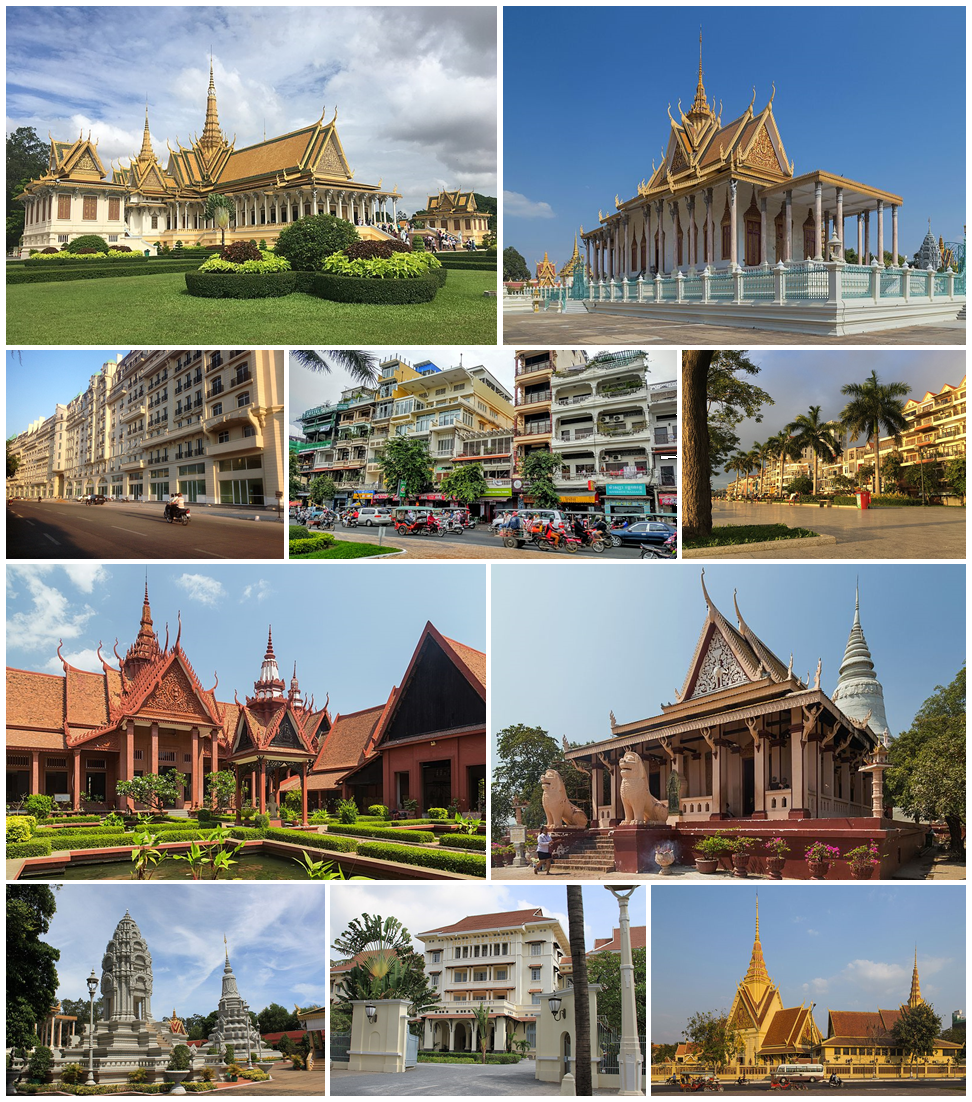
Phnom Penh, Cambodia’s vibrant capital city, boasts a variety of famous attractions that offer a glimpse into the country’s rich history and culture. The Royal Palace’s stunning Silver Pagoda showcases exquisite Khmer architecture and houses significant religious artifacts. The National Museum of Cambodia displays an impressive collection of Khmer art and historical objects. The somber Tuol Sleng Genocide Museum and the Choeung Ek Killing Fields provide profound insights into Cambodia’s tragic past under the Khmer Rouge regime. Additionally, the bustling Central Market and the lively riverside promenade, lined with cafes and shops, highlight the city’s dynamic atmosphere, making Phnom Penh a must-visit destination for travelers.
3. Siem Reap: Gateway to Angkor
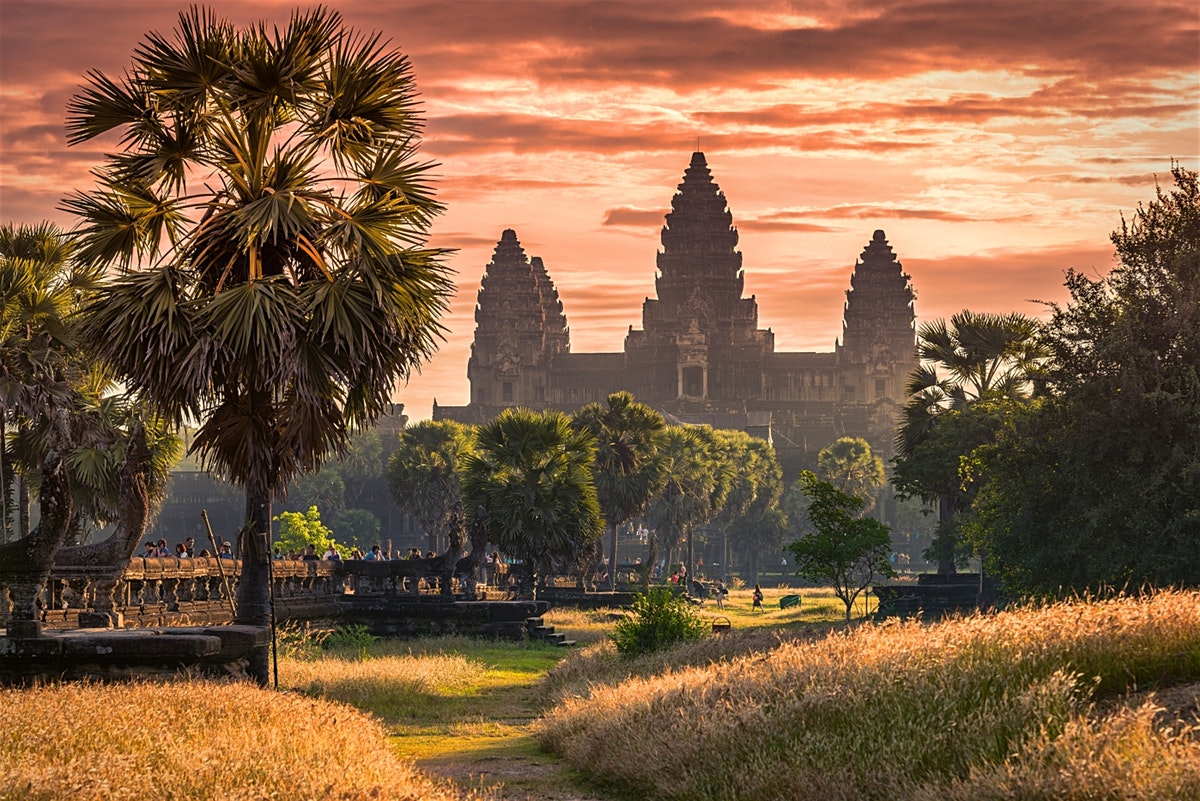
Siem Reap, the gateway to the Angkor temple complex, is home to several famous attractions that complement the historical significance of Angkor Wat. The Angkor National Museum offers insightful exhibits on the Khmer Empire’s history and culture. The lively Pub Street is renowned for its vibrant nightlife, bustling markets, and diverse dining options. The floating villages on Tonle Sap Lake provide a unique glimpse into local life on the water. Additionally, the serene Banteay Srei temple, known for its intricate pink sandstone carvings, and the picturesque Phnom Kulen National Park, featuring waterfalls and sacred sites, are must-visit destinations that enrich the Siem Reap experience.
4. Battambang: Colonial Architecture and Countryside Charm
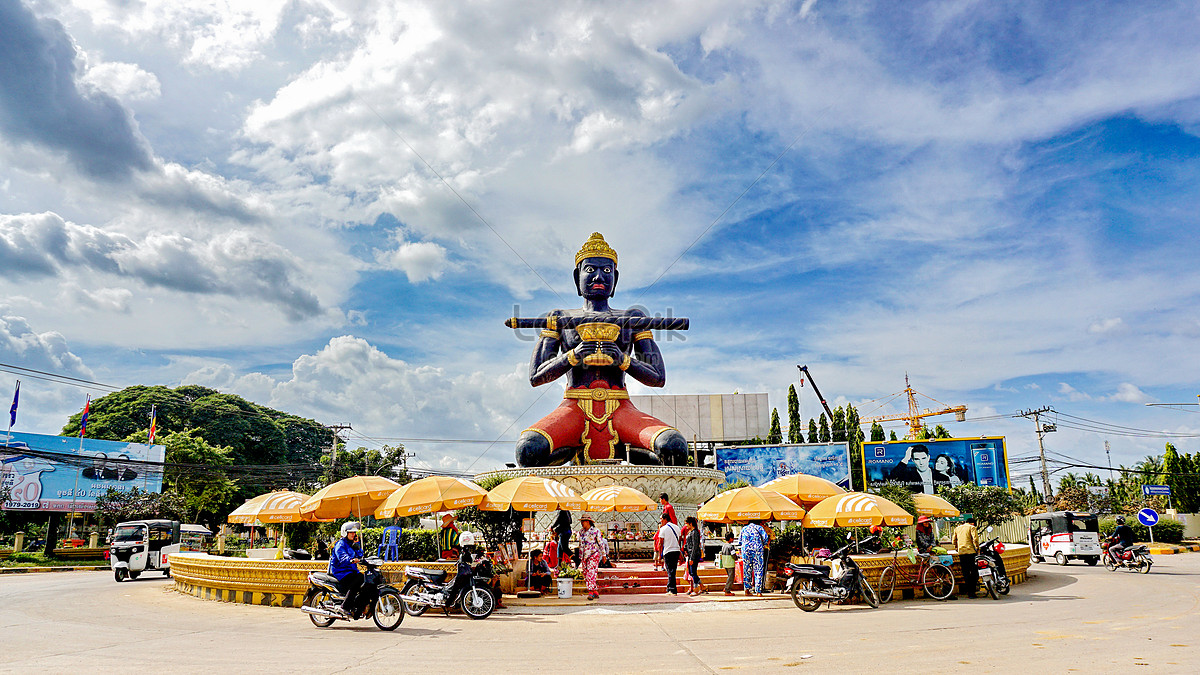
Battambang, known for its well-preserved colonial architecture and picturesque countryside, is a charming destination in Cambodia. City buildings from the French colonial period, such as the Governor’s Residence and the central market, provide a glimpse of the city’s past. Battambang’s famous attractions include the Phare Ponleu Selpak Circus, which showcases local talent in performing arts, and the serene Wat Banan temple, often compared to a smaller Angkor Wat. The Bamboo Train provides a unique and exhilarating way to explore the countryside. At the same time, the nearby Phnom Sampeau, a hilltop temple complex, offers stunning views and a poignant history lesson with its Killing Caves. These sites, along with Battambang’s vibrant art scene and welcoming atmosphere, make it a captivating place to visit.
5. Sihanoukville: Coastal Paradise
Sihanoukville is famous for its stunning beaches and vibrant nightlife. The city boasts several famous attractions, such as Otres Beach’s and Serendipity Beach’s pristine shores. It is perfect for sunbathing, swimming, and beachside activities. Koh Rong and Koh Rong Samloem, accessible by ferry from Sihanoukville, offer idyllic island experiences with crystal-clear waters and lush jungles. The lively Golden Lions Roundabout is a central landmark surrounded by restaurants and bars. Ream National Park, with its diverse ecosystems of mangroves, forests, and coral reefs, provides excellent opportunities for eco-tourism and wildlife spotting. Sihanoukville’s blend of natural beauty and vibrant entertainment options makes it a must-visit destination on Cambodia’s coast.
6. Tonle Sap Lake: Floating Villages
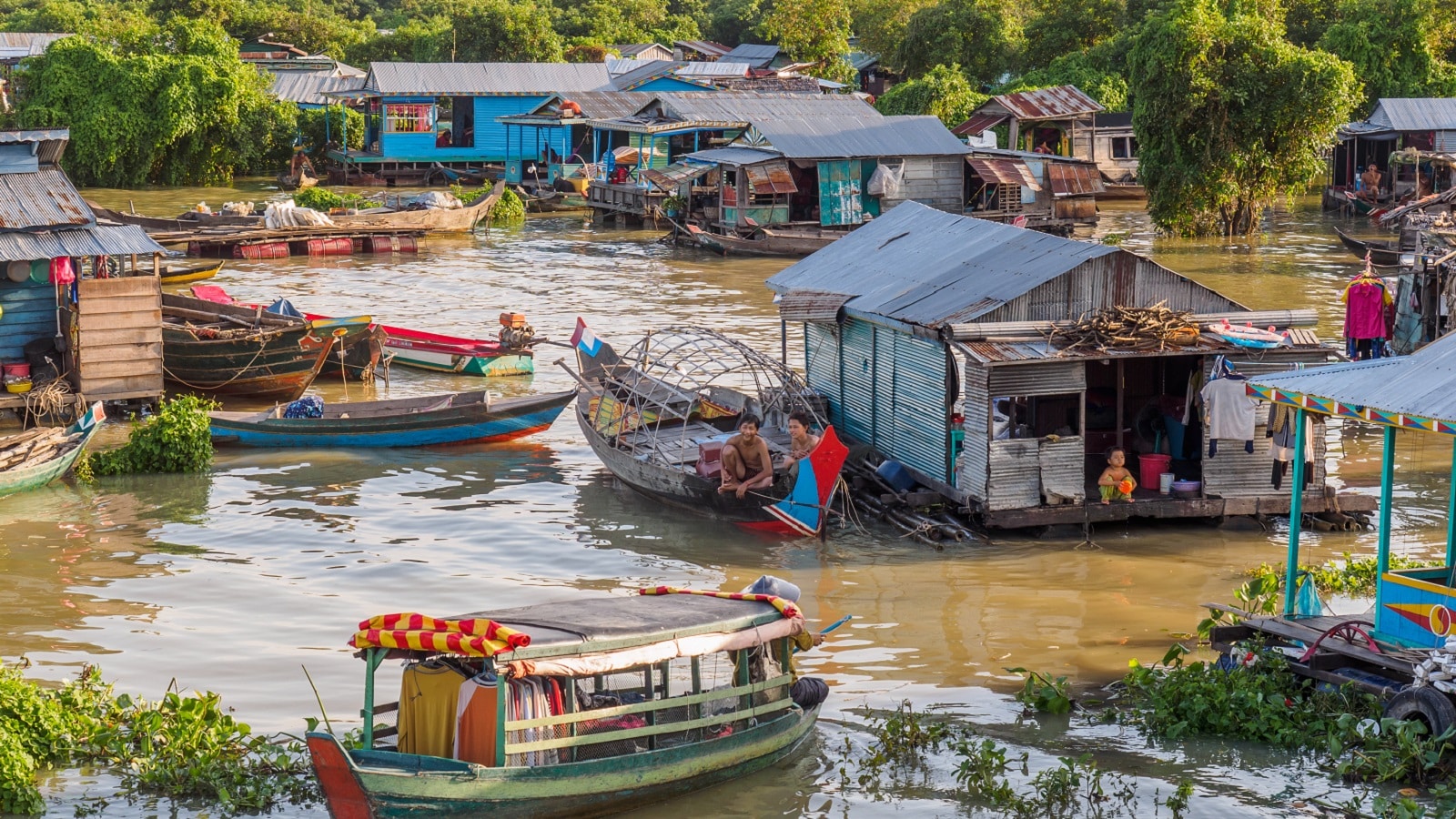
Tonle Sap Lake in Southeast Asia is renowned for its floating villages that offer a fascinating glimpse into the lives of the communities on the water. These villages, such as Kampong Phluk, Chong Khneas, and Kampong Khleang, feature houses, schools, and markets built on stilts, adapting to the lake’s seasonal changes. Residents primarily depend on fishing and aquaculture for their livelihoods, with fish farms and floating markets being common sights. Visiting these floating villages provides an immersive cultural experience that allows travelers to witness the ingenuity and resilience of the people living in harmony with the natural environment of Tonle Sap Lake. Boat tours offer the best way to explore the area, offering insights into the daily routines and traditions of the local communities while navigating the tranquil waters of this remarkable ecosystem.
7. Kampot and Kep: Scenic Escapes
There is something magical about Kampot and Kep, two picturesque Cambodian towns with natural beauty and a laid-back atmosphere. There are many beautiful things to see in Kampot, such as its French colonial architecture, pepper plantations, and the stunning Bokor National Park, complete with waterfalls and misty mountains. The town’s riverside promenade, lined with cafes and restaurants, provides a perfect spot for relaxation and enjoying the scenic views.
Kep, located a short drive from Kampot, is renowned for its quiet beaches, delicious seafood, and the historic Kep National Park. The town’s iconic crab market is a must-visit, where visitors can sample freshly caught seafood. Together, Kampot and Kep offer a harmonious blend of natural landscapes, historical sites, and local flavors, making them ideal destinations for travelers seeking a peaceful retreat in Cambodia.
Readmore: Top 10 Things To Do In Cambodia
Vietnam Tour 247 – Reputable Combodia tour agency
Vietnam Tour 247 is a leading travel agency in Vietnam, renowned for crafting personalized private tours and multi-day excursions across Vietnam, Laos, Cambodia, Thailand, and Bali. As a proud Allure Vietnam Travel Group member, we are committed to delivering exceptional travel experiences tailored to each client’s unique preferences. Our extensive range of Vietnam tour packages covers Southeast Asia’s most popular destinations and highlights, catering to every type of traveler. Whether you’re drawn to vibrant urban centers, serene rural landscapes, rich cultural experiences, or awe-inspiring natural wonders, our flexible tours align seamlessly with your preferences, budget, and schedule.
For those planning a trip to Cambodia, we offer comprehensive options like the “Signature Vietnam & Cambodia – 12 Days” and the “Signature Indochina Tour (Vietnam – Laos – Cambodia) – 15 Days,” ensuring an unforgettable exploration of Cambodia’s rich history, stunning architecture, and vibrant culture. With its rich history and cultural significance, Cambodia is a must-visit destination, and Vietnam Tour 247 curates immersive experiences from Angkor Wat to Phnom Penh’s markets. Our personalized service ensures your trip matches your vision, with experienced travel consultants customizing your itinerary to exceed expectations.
As part of the Allure Vietnam Travel Group, we offer exceptional customer service, handling all trip details from accommodations to guided tours. Trust Vietnam Tour 247 to provide an enriching and unforgettable journey through Southeast Asia, perfectly tailored to your desires and expectations.
In Conclusion
In conclusion, mastering how to travel to Cambodia ensures a memorable and seamless journey into this fascinating Southeast Asian gem. By preparing with the right visa, ensuring your travel documents are in order, and understanding the local customs and transportation options, you can fully enjoy Cambodia’s rich cultural heritage, stunning temples, and warm hospitality. With thoughtful planning and an open mind, your trip to Cambodia will be an enriching experience filled with unforgettable adventures and discoveries. Safe travels, and enjoy all that this captivating country has to offer!
Read more: Travel Agency Vietnam: Best Travel Agency for Vietnam Tours

